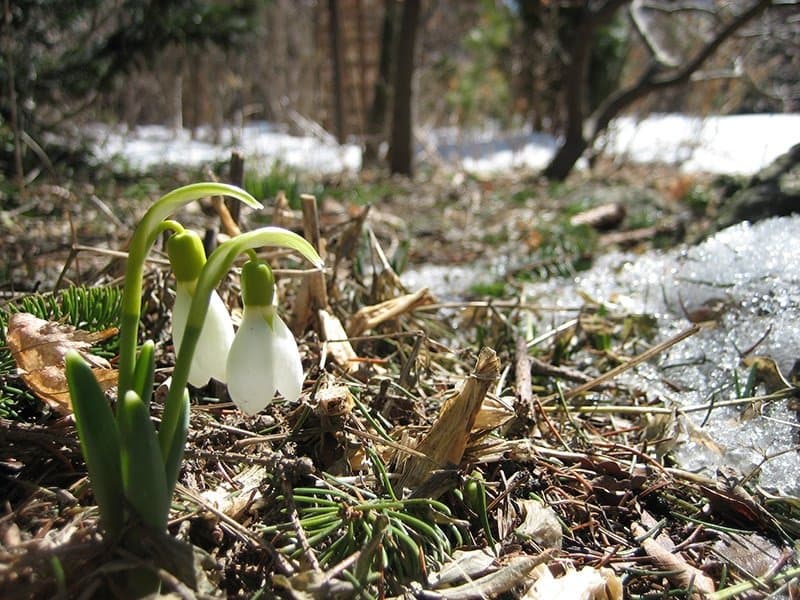
Although summer is still upon us, it’s time to consider snowdrop orders. Snowdrop bulbs are susceptible to drying out once lifted from the ground, and require early planting if they’re to survive. Early orders for these delicate bulbs will help us get them safely planted by the end of September.
Those in-the-know about the ways of snowdrops can tell you that the later the little bulbs are planted, the fewer you can expect to see coming up in spring. Fortunately, the bulbs can be quickly planted in clusters, and then forgotten about until they wake us up in earliest spring. There’s nothing so memorable as the first day snowdrops are noticed, poking up their sharp quill-like foliage, soon to be followed by white flower buds. This is the definitive date when winter turns the corner and spring is revealed.
My snowdrops usually rise in the first or second week of March, depending on how much direct sun they receive. Clumps on the east side of the house are first to show themselves, then several clumps on the north side growing in permanent shade follow a week later. If March comes in like a lion with a late snowstorm, I turn a large pot over the standing snowdrop clumps to protect them from being crushed under sudden heavy drifts. I’ve noticed that snowdrops are able to break ground and come up under and through a snowdrift, remaining erect and undamaged, even when the snow is higher than the little plants. When snow melts, the snowdrops are standing erect, as the drift shrinks around them.
Snowdrop bulbs tend to be expensive, and galanthophiles (gardeners totally enraptured by snowdrops, like myself) seldom have sufficient funds to buy all the bulbs we desire. Consequently, we try to provide encouraging circumstances for the bulbs to thrive and make expansive colonies. I try to put the bulbs into woodland settings with organic soil under coniferous trees, and also in shaded perennial beds with not too much moisture in summer. A simple guideline is to plant snowdrops near hellebores. They make good companions, enjoying moist soil in spring, and will tolerate some drought in summer.
There was little choice in Galanthus species when I first began growing snowdrops. I was only able to plant G. nivalis, the common white snowdrop, and those are the bulbs that have grown into thick clusters in my garden, and are spreading about. Next, I came upon some bulbs of G. nivalis f. pleniflorus ‘Flore Pleno’, the honey-scented double snowdrop, with a ruffled skirt of expanded double petals hanging like crinolines under broad white guard petals. The giant or greater snowdrop, sometimes called Elwes’s snowdrop (G. elwesii), is the most unusual in my small tribe of snowdrops. G. elwesii is found in the Balkans and western Turkey, and its comparatively large, dangling white globes look almost like hanging street lamps. Unlike the reflexed, open petals of smaller species, the big white petals of G. elwesii remain closed in a symmetrical oval shape (something like an unopened tulip). Their height and large petals are quick to attract attention when galanthophiles are on the prowl.
More and newer snowdrop cultivars are becoming available. The elongated outer tepals and green-blotched inner tepals of ‘Magnet’ snowdrop dangle provocatively from unusually long pedicels (stalks). ‘Magnet opens widely, in helicopter-fashion, on mild days and releases a honey scent in warm breezes. My most unusual snowdrop is ‘Hippolyta’, with large bell-shaped flowers filled with green-edged white petticoats. Once established (and that could take years), ‘Hippolyta’ can form two flowers per bulb (other snowdrops give one flower per bulb), doubling the fancy display. ‘Hippolyta’ was bred by Heyrick Greatorex, a retired calvary officer and reclusive galanthophile living in a converted railway carriage at the bottom of his garden in Brundall, Norfolk. The Heyrick double cultivars are among the most beautiful of modern snowdrops, and make an impressive addition to any snowdrop collection.
